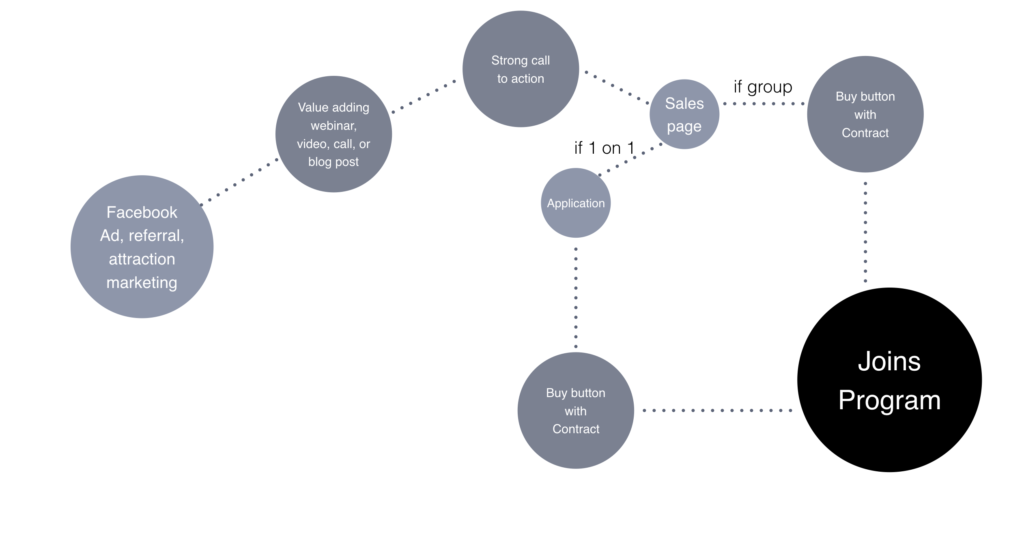
This post is all about social media marketing business.
Social Media Marketing Business
As a small business owner, you know that getting your name out there is crucial for success. One way to do that is through social media marketing.
However, with so many social media platforms to choose from and limited resources, it can be difficult to know where to start.
In this post, we’ll discuss some tips and strategies for using social media marketing to help your small business grow.
- Identify your target audience. Before you start posting on social media, it’s important to know who your target audience is. Consider factors such as age, location, interests, and buying habits. This will help you determine which social media platforms your audience is most active on and how to tailor your content to appeal to them.
- Create a content calendar. Planning out your content in advance will help ensure that you are consistently posting on social media. Use a content calendar to schedule posts and set reminders for when it’s time to create new content. This will also help you stay organized and on track with your social media marketing efforts.
- Use visually appealing content. Social media is a visual medium, so it’s important to use high-quality images and videos to grab the attention of your audience. Use tools like Canva or Adobe Spark to create eye-catching graphics and infographics. You can also use Instagram stories, TikTok, and Facebook live to show behind the scenes of your business and engage with your audience.
- Engage with your audience. Social media is a two-way conversation, so it’s important to engage with your audience. Respond to comments and messages in a timely manner, and use polls and surveys to gather feedback from your followers. You can also host live Q&A sessions or create a community group to foster engagement and build relationships with your audience.
- Track your results. Use analytics to track the performance of your social media marketing efforts. Look at metrics such as engagement rates, reach, and conversion rates to see what’s working and what’s not. Use this information to adjust your strategy and make improvements.
Social Media Marketing For Business: Paid Vs Organic Posts
Social media has become an essential tool for businesses to promote their products and services. However, with so many options available, it can be challenging to determine the best approach for your business.
One of the biggest decisions businesses must make when it comes to social media marketing is whether to invest in paid or organic posts. In this blog post, we will discuss the pros and cons of each approach and help you determine which one is best for your business.
First, let’s define what paid and organic posts are. Paid posts are social media posts that are promoted using paid advertising. This means that businesses pay to have their posts shown to a larger audience.
Organic posts, on the other hand, are posts that are not promoted using paid advertising. These posts rely on the audience that a business has built organically.
Paid posts offer a number of advantages. First and foremost, paid posts can reach a larger audience than organic posts. This is because businesses can use targeting options, such as demographics and interests, to reach the people most likely to be interested in their products or services.
Additionally, paid posts allow businesses to quickly increase their reach and drive more traffic to their website.
However, paid posts also have their drawbacks. One of the main disadvantages is that they can be expensive, especially if a business is not targeting their ads effectively.
Additionally, paid posts can also be perceived as less trustworthy by some audiences, as they are seen as “advertised.”
Organic posts offer a number of advantages as well. First and foremost, organic posts are free. This means that businesses do not have to invest in paid advertising to reach their audience.
Additionally, organic posts are seen as more trustworthy by some audiences, as they are not “advertised.”
However, organic posts also have their drawbacks. One of the main disadvantages is that they can reach a smaller audience than paid posts.
This is because they rely on the audience that a business has built organically. Additionally, organic posts can take longer to drive traffic to a website.

Both paid and organic posts have their advantages and disadvantages. The best approach for your business will depend on your goals and budget. Paid posts are a great way to quickly reach a larger audience, but they can be expensive.
Organic posts are a cost-effective way to reach an audience, but they can take longer to drive traffic to a website. By considering your goals and budget, you can determine the best approach for your business.
Click here to learn more about social media for business.
Social Media Marketing For Business: Top Types Of Posts To Share
When it comes to social media marketing for businesses, the type of content that is shared can make a big difference in the success of a campaign.
There are many different types of posts that businesses can share on social media, and the best type for your business will depend on your goals and target audience. In this blog post, we will discuss the top types of posts that businesses should consider sharing on social media.
- Product/Service Posts: These types of posts highlight the products or services that your business offers. They can include images, videos, or text that describe the features and benefits of your products or services. These posts are great for driving sales and promoting your brand.
- Educational Posts: These types of posts provide valuable information to your audience. They can include tips, tutorials, or industry news. These posts help to establish your business as an expert in your field and can also drive website traffic.
- Customer Testimonials: These types of posts feature positive reviews or comments from your customers. They can be in the form of written testimonials, videos, or images. These posts can help to build trust and credibility with your target audience.
- Behind-the-Scenes Posts: These types of posts give your audience a glimpse into the day-to-day operations of your business. They can include images or videos of your team, your office, or your manufacturing process. These posts help to humanize your business and build a connection with your audience.
- User-Generated Content: These types of posts feature content that is created by your customers. They can include photos, videos, or comments that showcase how customers are using your products or services. These posts can help to build a sense of community and encourage engagement.
- Live Streams: These types of posts allow businesses to interact with their audience in real-time. They can be used to showcase product demos, answer questions, or host Q&A sessions. These posts can help to increase engagement and build a connection with your audience.
There are many different types of posts that businesses can share on social media. By considering your goals and target audience, you can determine the best types of posts to share.
By sharing a mix of product/service posts, educational posts, customer testimonials, behind-the-scenes posts, user-generated content, and live streams, businesses can increase their chances of success on social media.
Click here for more social media advice.
Social Media Marketing For Business: Lead Generation
Social media has become an essential tool for businesses to promote their products and services and generate leads. With over 3 billion people using social media worldwide, it provides a vast audience for businesses to target. However, simply having a presence on social media is not enough to generate leads. Businesses must have a strategy in place to effectively reach and engage their target audience and convert them into potential customers.
One of the most effective ways to generate leads on social media is through the use of landing pages. Landing pages are web pages that are specifically designed to convert visitors into leads. They typically include a form that visitors can fill out to receive more information or a free trial. By linking to a landing page in a social media post, businesses can direct their audience to take a specific action.
Another effective way to generate leads on social media is through the use of lead magnets. Lead magnets are valuable resources, such as e-books, webinars, or templates, that businesses offer in exchange for contact information.

By providing lead magnets, businesses can attract potential customers who are interested in their products or services and capture their contact information.
Creating valuable and engaging content is also an effective way to generate leads on social media. By providing valuable information, such as tips or tutorials, businesses can establish themselves as experts in their field and build trust with their audience.
Additionally, by creating engaging content, such as interactive quizzes or polls, businesses can increase engagement and build a relationship with their audience.
Finally, businesses can generate leads on social media by providing excellent customer service. By responding promptly to questions and concerns, businesses can build trust and loyalty with their audience. Additionally, by providing helpful resources, such as tutorials or FAQs, businesses can provide value to their audience and increase the chances of repeat purchases.
 Generating leads on social media requires a strategic approach. By using landing pages, lead magnets, creating valuable content, and providing excellent customer service, businesses can effectively reach and engage their target audience and convert them into potential customers. By implementing these strategies, businesses can increase their chances of success on social media and generate leads.
Generating leads on social media requires a strategic approach. By using landing pages, lead magnets, creating valuable content, and providing excellent customer service, businesses can effectively reach and engage their target audience and convert them into potential customers. By implementing these strategies, businesses can increase their chances of success on social media and generate leads.
Click here to learn more about lead generation and email marketing now.
In conclusion, social media marketing can be a powerful tool for small businesses looking to increase their visibility and reach new customers.
By identifying your target audience, creating a content calendar, using visually appealing content, engaging with your audience, and tracking your results, you can create a social media marketing strategy that gets results.



